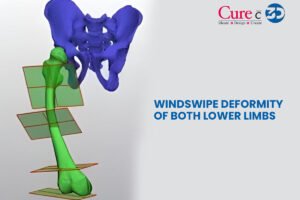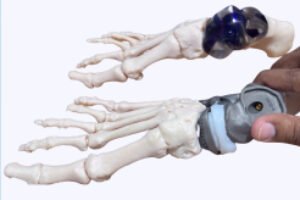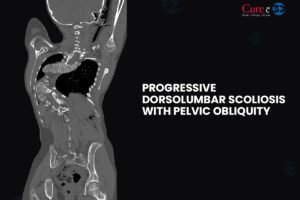In the field of cranial reconstruction, titanium continues to be the gold standard for structural repair of large calvarial defects. The use of titanium implants in combination with 3D printing in cranial surgery provides a perfect anatomical fit, strength, and compatibility with the body for a long time without any allergic reactions. This article outlines a newly designed onlay patient-specific cranial implant manufactured by CureWith3D for a young male trauma victim who needed a skull restoration after an accident.
Case Summary
A 29-year-old male sustained a right frontoparietal skull fracture following a high-velocity road traffic accident. CT scans have shown a full-thickness skull defect with irregular bony edges and exposed dura, resulting in the need for cranial reconstruction. The surgical team collaborated with the Curewith3D team for the 3d printed custom titanium cranial implant, matching the anatomy and mechanical properties of the affected area for a perfect fit.
Design Workflow of Custom Titanium Cranial Implant
The medical team provided CT imaging (1-mm slice thickness). The CT scans were then converted into DICOM format. Image segmentation and 3D modeling were carried out with Materialise Mimics, and then implant design was done with Materialise 3-matic. The implant was planned as a patient-specific 3D printed skull implant (onlay type), aimed at recreating the original skull shape & providing structural support.
Custom Titanium Cranial Implant Features:
- The anatomical mirroring of the contralateral hemisphere for symmetry
- Lattice (Ti mesh) structure across the central zone to reduce weight, allow tissue integration, & promote drainage
- Edge smoothing to minimize soft tissue irritation and pressure points
- Thickness variation for natural cranial contour.
Fabrication and Materials
The implant was designed entirely at CureWith3D and manufactured in our certified medical-grade additive manufacturing facility. Cranial skull implant fabrication was done through Direct Metal Laser Sintering (DMLS), a powder-bed fusion process suitable for parts with complex shapes.
- Material: Ti6Al4V, a medical-grade titanium alloy which is renowned for highest strength-to-weight ratio, great fatigue resistance, biocompatibility, and designed to reduce bacterial adhesion as well as promote tissue healing.
Why DMLS was Chosen?
- The high-resolution, layer-by-layer method for the production of very precise & complex geometries
- Superior mechanical strength for weight-bearing areas
- Custom lattice structures allow for lightweight customization in the metal implant without compromising strength
The final 3D printed skull implant was sterile, lightweight, and ready for surgical application.
Surgical Integration and Outcome
Intraoperative placement was smooth. The 3D printed skull implant matched the defect perfectly onto the patient’s skull. No trimming or modifications were required. It was secured using titanium screws via predesigned screw holes. Postoperative imaging showed that the implant was perfectly fitted and no displacement occurred. At check-ups, the patient had complete recovery with intact neurological function, recovered cranial esthetics, and no issues related to the implant.
Discussion
This case underscores the effectiveness of combining neurosurgical implant design with 3D printing in cranial surgery. Materialise software facilitated the detailed anatomical model of the patient’s skull and the design customization, such as the Ti mesh and the screw holes in the appropriate places, which were further carried out. The DMLS method ensured the implant is structurally strong while keeping the lightweight features, which are very important for the patient’s comfort and healing in the long run.




